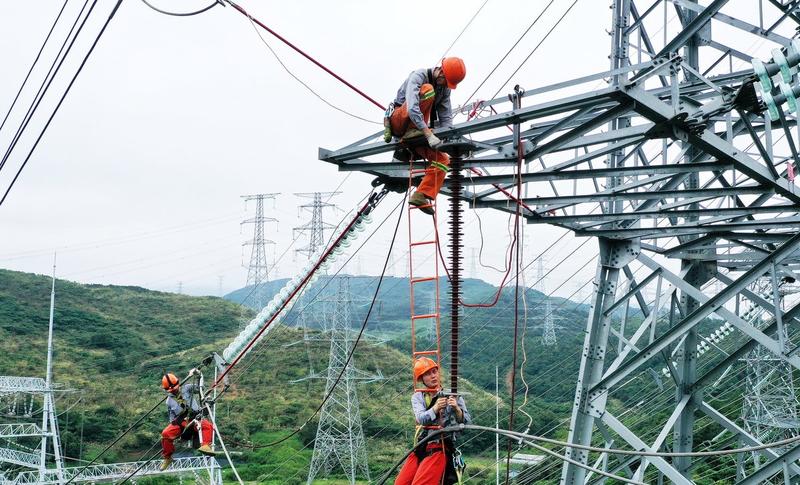 State Grid employees check a power transmission network in Zhoushan, Zhejiang province. (PHOTO BY YAO FENG / FOR CHINA DAILY)
State Grid employees check a power transmission network in Zhoushan, Zhejiang province. (PHOTO BY YAO FENG / FOR CHINA DAILY)
State Grid Corp of China, the world's largest electricity company by power generation capacity, said its new energy power generation was around 588.4 billion kilowatt-hours last year, up 15 percent from 2019.
It is the equivalent of reducing coal consumption by 250 million metric tons and carbon dioxide by 450 million tons, said the company.
State Grid said it will build a stable, safe and economical power transmission channel to further absorb more clean energy, based on complementary multi-energy mix of hydropower, wind power and photovoltaic in the country, said Xin Baoan, executive chairman of the Beijing-based central State-owned enterprise.
The company, which runs the majority of China's electricity distribution networks, has also pledged to further increase utilization of renewable energy through technological innovation
As China has pledged to reach its peak carbon dioxide emissions by 2030 while striving to achieve carbon neutrality by 2060, the company would further optimize its structure of the power sources and take advantage of new energy, including hydropower and nuclear, to come up with a clean energy optimization allocation platform, he said.
ALSO READ: SOEs set out measures on carbon neutrality
The company, which runs the majority of China's electricity distribution networks, has also pledged to further increase utilization of renewable energy through technological innovation.
So far, the new energy utilization rate of State Grid's operating projects is around 97 percent.
The company will also further enhance the trans-province clean energy power transmission, advancing consumption of clean energy and promoting electric power by innovating environmental protective power grid technology, said Xin.
State Grid has made efforts to reduce overall renewable energy curtailment, by increasing the utilization of ultrahigh voltage lines, dispatching less coal power during off-peak hours, and facilitating more interprovincial power deals, said Wei Hanyang, a power market analyst at BloombergNEF.
In the future, less curtailment and higher renewable integration would require more facilitation in grid-level and even inter-grid collaboration, he said.
State Grid has made major strides in clean power. As the dominant electricity distributor in the world's biggest energy consumption market, the company kicked off three pumped hydro storage plants in Shanxi, Zhejiang and Shandong provinces in December, to ease idled solar and wind power capacity.
The company started construction of 21 pumped hydro storage plants during the past five years, with a total installed capacity of more than 28 million kilowatts, it said.
Pumped hydro storage allows excess power to be saved by pumping water from lower to upper reservoirs when electricity demand is low, then releasing it back down to generate electricity when consumption is high.
China is utilizing technologies like large-scale storage and ultrahigh voltage power lines to help reduce renewable power waste. The nation aims to develop about 40 gigawatts of pumped hydro storage capacity by this year-end.
State Grid recently set up a joint venture with China State Construction Engineering Corp to further tap the potential of China's smart charging network for new energy vehicles.
READ MORE: State Grid to further efforts in smart charging network for EV drivers


